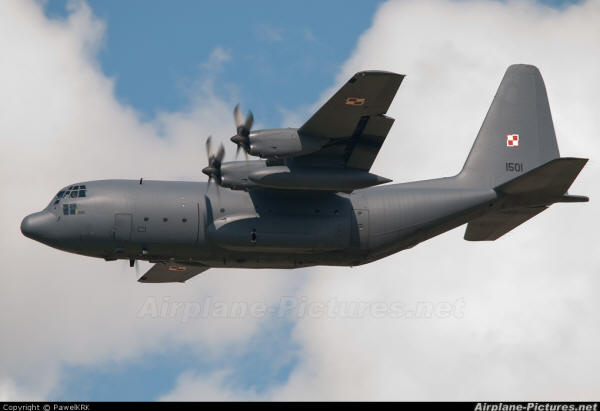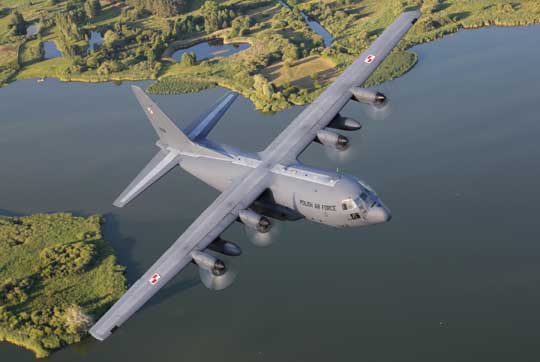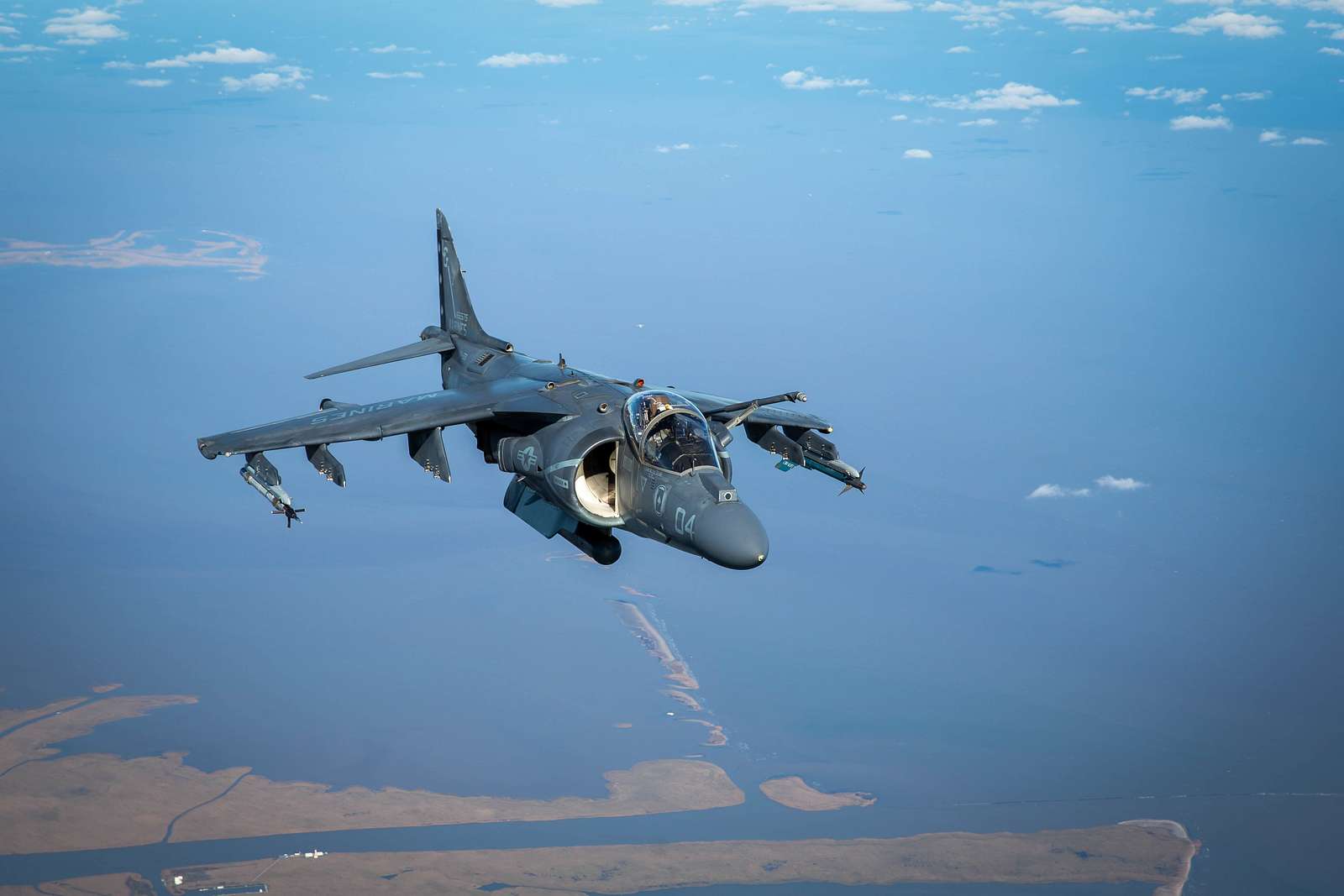
10 years of the C-130E Hercules aircraft in the armed forces of Poland, part 2

33. The transport aviation base in Powidzie, thanks to its infrastructure, is capable of receiving all types of aircraft used throughout the world.
While flying to the United States is always a good opportunity to gain experience, it is quite a costly undertaking and is best paired with F-16 exits where C-130s support the entire component and represent a small additional financial burden, which is mostly fuel consumption. during work.
However, the problem of financing the army concerns not only Poland, and due to limited budgets, European countries decided to organize their own transport aviation exercises, in which Poland also participates. From our point of view, exercises in Europe, in addition to lower cost, have another advantage. Compared to training, Americans place more emphasis on all documentation related to a specific task. We are talking about the preparation of the mission, starting with the arrival of the ATO (Air Tasking Order), from which the whole procedure begins, the development of the mission profile together with other aircraft (especially with AWACS radar surveillance aircraft), direct preparation for this and only then the implementation itself. All of these steps must be completed as soon as possible, but with the proper level and procedures to ensure safe execution.
In the case of new crews who are just getting familiar with flying in an international environment, the situation where documentation preparation can be worked out in stages pays off and allows for more efficient performance of real tasks in the future. The training provided in the USA, although at a very high level, does not cover everything, and especially the already mentioned cooperation with other machines seems to be valuable in terms of new crews. The regularity of the exercises and their scale make it possible to conduct exercises related to strictly tactical flights, which in our area, even due to the lack of mountains of the correct form and a limited number of aircraft, cannot be performed.

Polish C-130E Hercules during the advanced training of the personnel of the Polish transport aviation in an international exercise at the airport of Zaragoza.
European Red Flag - EATC
The European Air Transport Command (EATC) began operations on 1 September 2010 in Eindhoven. The Netherlands, Belgium, France and Germany phased out large parts of their transport aircraft and tankers, followed by Luxembourg in November 2012, Spain in July 2014 and Italy in December of the same year. As a result, more than 200 aircraft sorties are now planned, scheduled and controlled by a single entity. This allows us to manage the limited transport resources of all countries more efficiently and thus save the bulk of taxpayers' money.
Another important aspect related to the work of the command is taking over part of the training tasks from individual countries. Within the framework of the established training plan, joint, cyclical, tactical exercises of transport aviation are conducted. In connection with the establishment of the training center in Zaragoza, the formula of the exercise has changed, which until now was based on applications and did not have a permanent list of participants. Under the new formula, permanent member states will participate in cyclic, advanced tactical training, but it will also still be possible to participate in the guest formula, i.e. in the same way that Poland participates in the entire program.
In the third European Advanced Air Transport Tactics Training Course 2017 (EAATTC 2017-17), organized in 3rd year in Zaragoza, the Polish component included a C-130E aircraft from the 33rd transport aviation base in Powidzie, as well as two crew and support equipment. staff. A particularly important feature of this exercise was that it was focused on purely tactical flights, under conditions of great time pressure, which simulated combat conditions as much as possible. The time required to prepare the route for the pilots and navigator was kept to a minimum, the amount of calculations required to complete the calculations was enormous, and the modification of the plan during the course of the mission presented additional complexity.
The crew had to go to specific points at a strictly defined time, to a place chosen in such a way that it did not have anything characteristic, which additionally interfered with the accuracy of actions so necessary in tactical tasks. A tolerance of plus or minus 30 seconds was required to complete the flight. In addition, once prepared, the mission did not need to be completed. Often there was a change in the elements of the task, and the crew was constantly in simulated communication with the AWACS aircraft, whose personnel controlled the execution of the task from the air. The flight itself took about 90-100 minutes, counting the net flight.
This did not mean, however, that at that time there was only one task. With such a flight, it was necessary to perform, for example, two landings at designated points, of which, for example, one on an unpaved surface, fly into the combat zone located above the training ground, go through a drop at a strictly defined time, and sometimes there was a simulated clash with fighters , which Spain fielded in the form of their F / A-18 Hornet. While the course held in Spain was called a single ship, i.e. the flight was carried out individually, the planes took off at 10-minute intervals and each crew performed the same tasks. Therefore, the loss of one crew directly affected the others following him and their ability to perform their tasks. This was an additional factor that put pressure on the crews and at the same time brought the exercise closer to combat conditions. The organizers of the course are interested in a wider participation of Poland in the program, which will allow us to use our large territory for European conditions. This will further diversify the training cycle.
In turn, in April 2018, the C-130E with the crew went to Bulgaria, where they were trained as part of the European Tactical Airlift Program Course (in this case, ETAP-C 18-2 - there was a name change compared to 2017) , the purpose of which is to unify the methods of use and procedures in accordance with which the crews of tactical transport aircraft operate in certain European countries. The ETAP course itself is divided into several stages, which are initially based on theoretical training, followed by preparatory conferences for exercises, and then on STAGE-C, i.e. tactical flight course for aircraft crews, and, finally, ETAP-T, i.e. tactical exercises.
In addition, the ETAP program provides for the training of instructors during the ETAP-I phase. On the other hand, during the annual symposiums (ETAP-S) procedures used in Europe are discussed and experiences are exchanged between individual countries.
A standard training day included a morning briefing, during which tasks were set for individual crews and a conflict scenario was drawn, in which specific aircraft participated. The mission itself took about 2 hours, but the time was slightly different depending on the tasks. In addition, due to the fact that STAGE-C is a training course, theoretical sessions on the chosen topic were held every day for about an hour.
Last July, a 39-man component from Powidz went to the Papa base in Hungary, where the ETAP-T exercise was being conducted. In total, 9 aircraft and eight countries were involved in the tasks, and during the two-week struggle, the entire range of tasks was worked out, including combined air operations COMAO (Composite Air Operations) with the participation of eight transport aircraft.
All the departures and the presence of Poland in the European training structures give hope for the further development of our capabilities in the field of air transport, but if people are ready, trained and constantly improve their skills, then unfortunately the fleet of increasingly aging transport workers is slowly lagging behind them. .
Loads and unusual tasks
In addition to standard support tasks, C-130E Hercules transport aircraft also perform non-standard tasks. When it is necessary to transport not necessarily heavy, but bulky cargo. These may be special forces vehicles, motor boats used by Formosa, or armored SUVs used in our embassies.
During the NATO summit in Poland, the sky was monitored by a Heron unmanned aerial vehicle, delivered aboard a C-130 from Israel. The container was designed in such a way that after loading it into the aircraft, only about a dozen centimeters of free space remained. This is another proof of the huge role of these aircraft in modern armies, which unify most of their equipment based on the well-proven C-130 platform.
In the case of F-16 pilot training missions at Albacete in Spain, C-130s perform a full flight of a component that can operate fully autonomously on the spot. At the same time, literally everything is transported in special containers. These are parts for the F-16, necessary consumables, and household items such as printers and paper. This allows you to simulate driving in an unknown environment and continue to work at the same level as outside the city.
Another unusual mission was the evacuation of Polish diplomatic personnel from embassies in Libya and Iraq. These were difficult flights, operated directly from Warsaw and without stops. At that time, the only control over the flight to Libya was exercised by the AWACS system, which reported the status of the airport as unknown. One of the flights, originally planned to be lightning-fast, without turning off the engines after landing, was tested by reality, which could plot other scenarios than the planners, and the flight had to wait two hours.
As a rule, upon arrival at the destination airport, people and key embassy equipment were taken on board and returned to the country as quickly as possible. Time was of the essence here, and the whole operation was carried out over the course of three days, with one aircraft and two crews flying alternately. The embassy was evacuated from Libya on August 1, 2014 with the participation of two C-130 aircraft, and in addition to the Poles, citizens of Slovakia and Lithuania boarded the aircraft.
A little later, as in the case of Libya, the C-130s again went to rescue Polish diplomatic workers, this time heading to Iraq. In September 2014, two transport workers from Powidz evacuated the site's personnel and key equipment over the course of three days, completing four missions. The C-130s took off at the urgent request of the Foreign Office and the entire operation took a total of 64 hours in the air.
C-130 sockets are also sometimes associated with less pleasant situations. In November of last year, overnight, an order came to leave for Tehran for the body of the Polish military attaché of our embassy. On the other hand, during the evacuation of Poles from the Donbass, the S-130, due to its significant carrying capacity, was used to transport the belongings of people who decided to flee the danger zone to Poland.

We are currently at a crossroads, so decisive, thoughtful and long-term decisions regarding the future of medium transport aviation in the Polish armed forces are becoming a necessity.
Another unusual mission carried out by the S-130 is a joint exercise with special forces, during which soldiers perform high-altitude jumps using oxygen apparatus. Hercules is the only platform in our armed forces that allows this type of operation.
From time to time, C-130s are also used to transport prisoners, mainly from the UK. In such a situation, the same number of prisoners and police officers board the plane to provide security throughout the flight, because prisoners cannot be handcuffed during the flight. These missions are interesting because the landings take place at the famous Biggin Hill base, where to this day you can meet aircraft from its heyday.
The Hercules was also used to transport unusual cargo such as the historic Renault FT-17 tank obtained from Afghanistan or the Caudron CR-714 Cyclone fighter jet from Finland (both of which were military vehicles used by the Poles).
Aircraft and crews are also ready to carry out urgent humanitarian missions, as was the case in August 2014, when our authorities, as the third country after the US and the UK, sent aid to Iraq in the form of mainly blankets, mattresses, camp beds, first aid items and food, which was then delivered by helicopter to the enclaves of Christians and Yezidis cut off by the Islamists.
